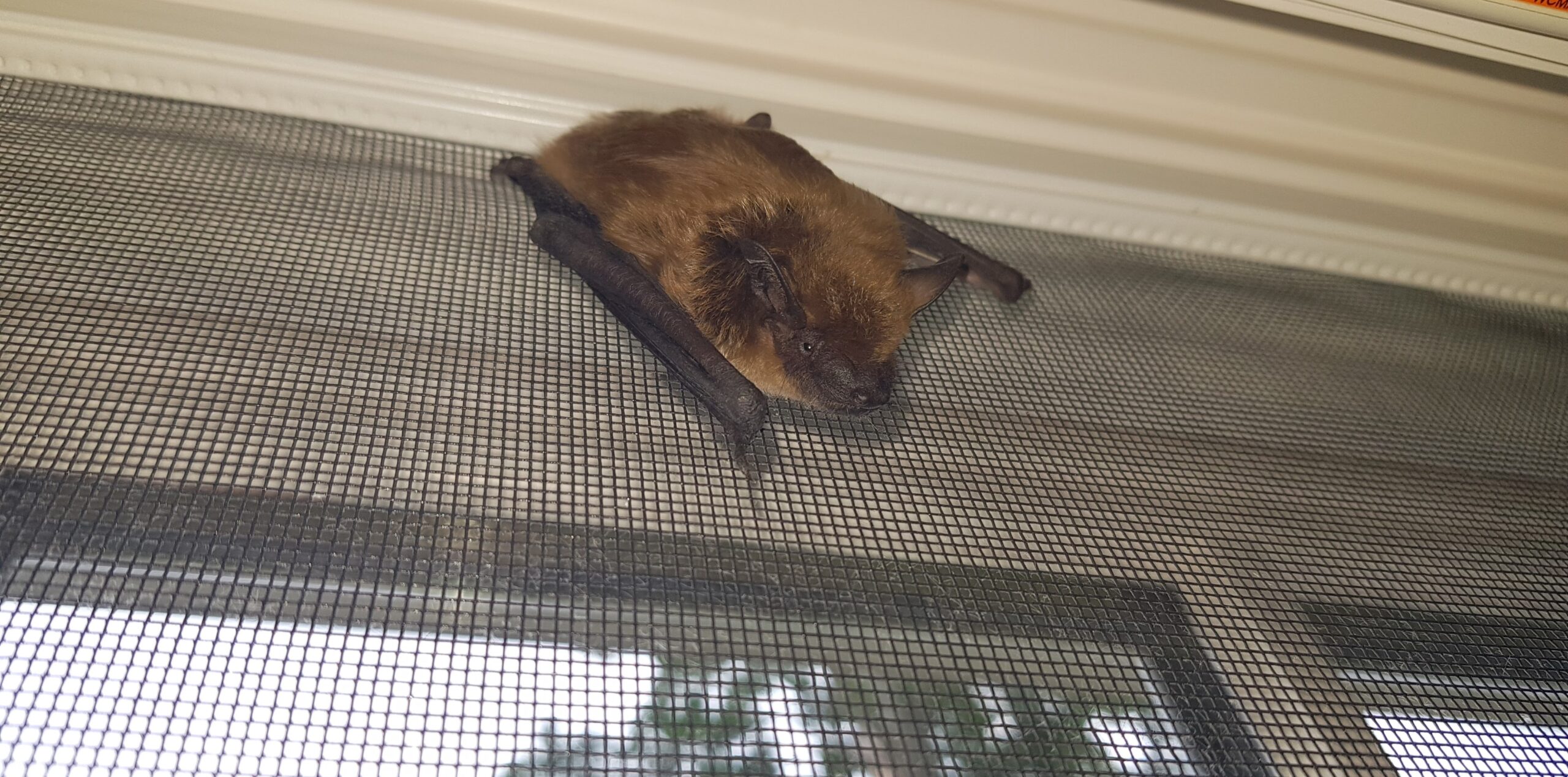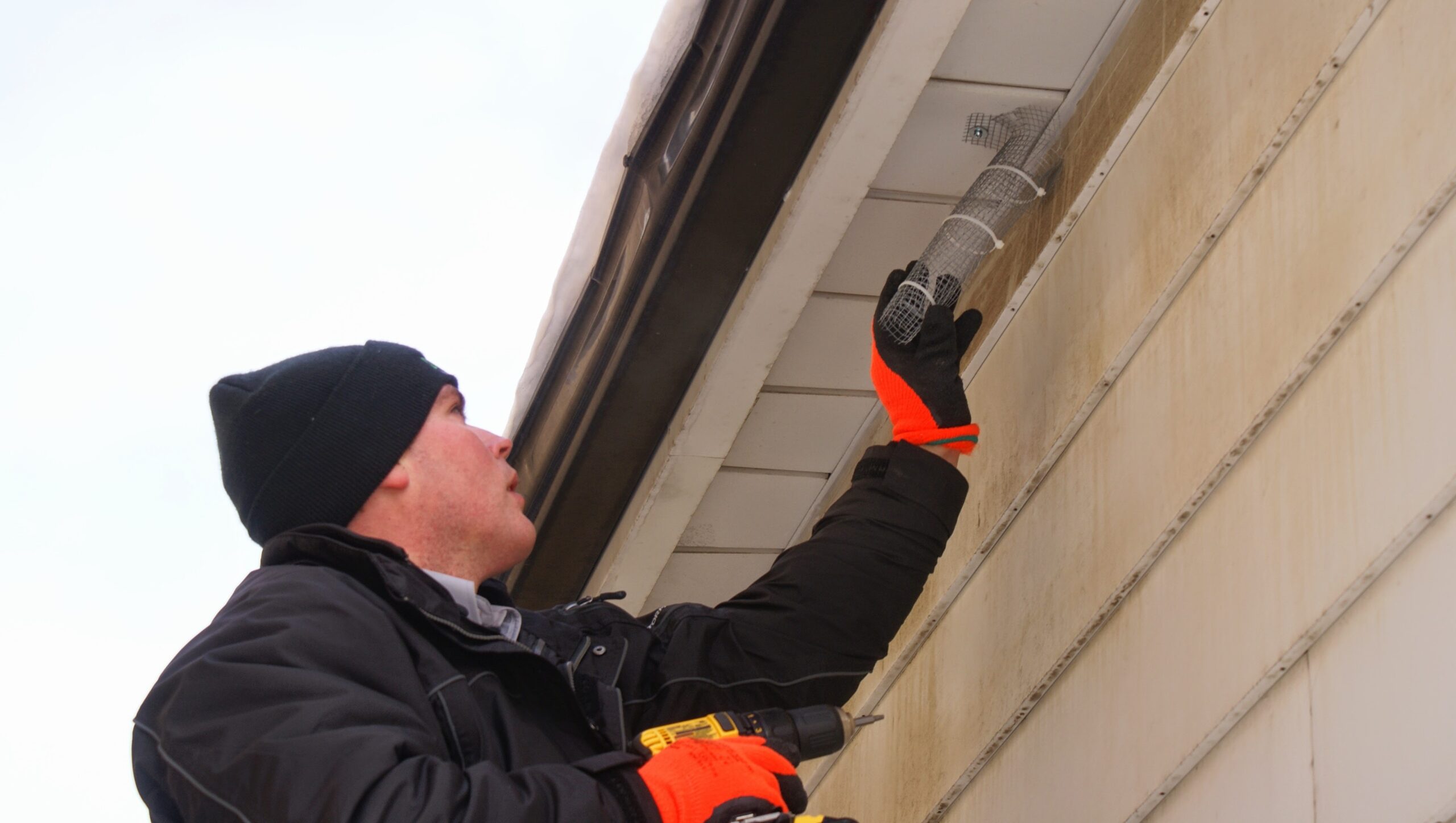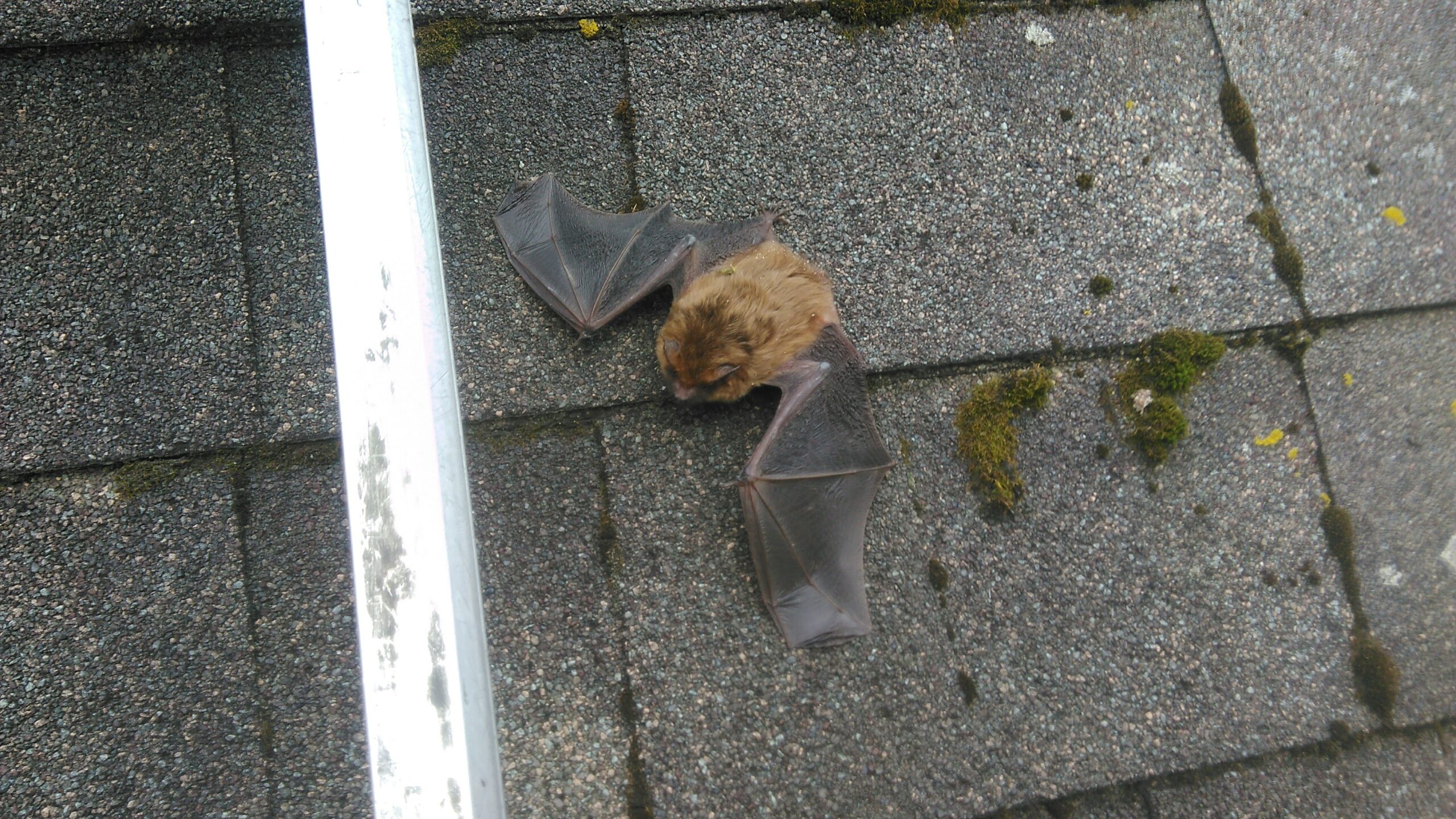BAT REMOVAL PROCESS
Assess and Remove
The key to removing bats from your home is determining their entry points. Bats can enter through small openings and leave very little trace behind. Our expert technicians will identify all the entry points and evict the colony humanely using one-way doors that allow the bats to leave for food but prevent their re-entry.
Clear and Clean
Depending on the size of the colony and how long they’ve been living in the home there could be a large mess to clean up. Our wildlife technicians will thoroughly remove bat guano and disinfect the space to eliminate any harmful traces left behind.
Prevent and Protect
Our wildlife technicians will provide a full, comprehensive protection plan against any future bat infestations. This would include sealing all the tiny gaps and openings around your home’s roofline to keep bats out.

Homeownership or managing a business presents an assortment of joys and challenges, one of the more unconventional being the presence of wildlife around your property. In the Waterloo Region, integrating peacefully with nature often means navigating the occasional encounter with our nocturnal neighbours – bats. Although they provide valuable ecological services, if they take up residence in your home or business, these animals can create a health risk for people as vectors of disease, along with other concerns like noise and odours.
This page explores what life with these animals involves, how to prevent their human encounters from turning sour, and how Skedaddle‘s professional bat removal in Kitchener-Waterloo can ensure both your and the animal’s well-being.
Life Among Bats in Kitchener-Waterloo
Nestled in Canada’s Ontario province, Kitchener-Waterloo is renowned for its rich history and innovation, with a thriving arts, culture and tech industry. The area is teeming with green spaces, including parks, trails, and conservation areas which have made it an attractive home not just for people but also for wildlife.
Here are some facts you should know about this area:
- The area is famous for its annual Oktoberfest, celebrating its German heritage and being one of the largest folk festivals in the world.
- It’s home to two globally renowned universities and numerous tech companies, earning it the moniker ‘Silicon Valley North.’
- The region is part of an economic powerhouse known as the “Technology Triangle” in Southern Ontario.
- The climate and built environment provide a unique urban habitat for a variety of wildlife, including bats.
Common Bat Problems In the Waterloo Region
Encountering a bat indoors can be a startling experience, but it’s essential to remain calm and take the necessary steps to mitigate the situation safely. Several common issues may arise when these animals are close to humans.
Health Risks: They are one of the most common carriers of rabies, making any bite potentially dangerous. In addition, their guano (or droppings) can pose a threat through the transmission of potentially severe respiratory illnesses.
Property Damage: The accumulation of guano not only poses a health risk; it can also cause damage to structures and surfaces. The acidity of the guano can eat away at wood and other materials, leading to costly repairs over time.
Noise and Nuisance: They are quiet animals, but if a significant number inhabit your home, you may hear scratching and squeaking in walls and attics, particularly at night. This can be a nuisance and disturb your peace.
Odour Issues: Along with the noise, the presence of these animals can lead to unwelcome odours from their guano and urine. Over time, these smells can penetrate building materials and require professional cleaning to fully remove.
Blockage and Structural Harm: They can inadvertently cause blockages in venting systems and chimneys or compromise structural integrity by nesting in crevices. These situations often necessitate professional intervention to resolve, ensuring both the safety of the structure and the humane treatment of the bats.

How To Get Rid Of Bats In Your Home Or Business
A proactive approach to prevention can save you a great deal of hassle down the line. Here are steps you can take to bat-proof your property:
Identify Entry Points: Thoroughly inspect your property to identify potential entry points. Common weak spots on a home include:
- Gaps where the roof meets the walls
- Cracks in siding and eaves
- Broken windows and screens
- Chimneys without caps
- Vents and openings for plumbing and electrical systems
Seal Openings: Once you’ve identified potential entry points, it’s crucial to seal them to prevent them from re-entering your property. Use materials like caulking, wire mesh, and weather-stripping to secure these gaps.
Maintain Your Property: Ensure trees and shrubs are trimmed away from your home or business to eliminate potential roosting spots close to entry points. Regular maintenance can also help identify and address structural issues before they become a problem.
Educate Your Household: Everyone in your home or office should be aware of the potential threats and know how to respond in the event of a sighting. This includes understanding that these animals should only be handled by professionals due to the risk of rabies.
Implement Professional Help Early: The moment you suspect that these animals have invaded your space, it’s wise to contact wildlife control in Kitchener-Waterloo. We have the expertise and equipment necessary to safely and humanely remove bats, ensuring no harm comes to them or your property.
Skedaddle‘s Approach to Humane Bat Removal
Skedaddle’s humane approach to removal involves a thorough understanding of their behaviour, combined with humane exclusion techniques designed to protect both humans and the animal. Here’s how our process works:
Comprehensive Home Assessment: One of our trained technicians will conduct a comprehensive assessment of your property, identifying the species of bats present and the entry points they’re using.
Customized Exclusion Techniques: Utilizing a range of exclusion devices, we will encourage them to leave your property safely and humanely, ensuring they cannot re-enter once they’ve departed.
- Bat Valves: These one-way doors allow the animals to exit but prevent them from returning, making it a gentle process that does not harm them.
- Proper Sealing: Once they have vacated, we seal the entry points to prevent future infestations.
Clean-up and Sanitization: After the exclusion process, it’s critical to clean and sanitize the area contaminated by guano. Our specialists employ advanced methods to ensure the area is left in a hygienic state.
Post-removal Inspection: We conduct a final inspection to ensure all bats have successfully left and that your property is secure against future intrusions.
These animals play a vital role in the ecosystem, and sharing our space with them can be safely navigated through education and proactive measures. If you find that cohabitation has become more than you bargained for, professional wildlife removal in Kitchener-Waterloo can provide a swift and humane resolution.

Keep Your Property Bat-Free With Skedaddle
Engagement with the natural world, whether through hiking, birdwatching, or simply enjoying the verdant life around your neighbourhood, is one of the many pleasures of living in this vibrant region. Wildlife, including bats, are a part of this experience, and it’s in our best interest and their own to maintain a peaceful coexistence.
By arming yourself with information about their behaviour and taking preventative measures, you can ensure that your interactions with these animals are positive. Should the need arise, Skedaddle can assist in managing and redirecting the wildlife that makes an uninvited entrance.
If you suspect you have a problem in your home or business, don’t hesitate to get in touch with Skedaddle for a professional assessment. Our team of experts is dedicated to providing humane wildlife removal services that offer peace of mind for you and your local environment. Remember, there are ways to manage interactions that respect the well-being of these animals and the safety of you and your loved ones. Take the first step towards a bat-friendly future – and the assurance of a bat-free indoor environment.
Bat Facts
FACT:
Bats, the only mammals capable of true flight, navigate the night skies with echolocation, emitting sounds to avoid obstacles.
FACT:
Over 1,400 species of bats exist globally, from tiny bumblebee bats weighing less than a penny to giant flying foxes.
FACT:
They play key roles in ecosystems by pollinating plants, dispersing seeds, and controlling insect populations, benefiting agriculture and natural habitats.
FACT:
Some bats have diets that include fish or small vertebrates, showcasing the diversity in their feeding habits and ecological niches.
FACT:
Bats can eat up to 1,200 mosquitoes in an hour, making them nature’s pest control and helping prevent mosquito-borne diseases.They can live for more than 30 years, displaying remarkable longevity compared to other mammals of similar size.





